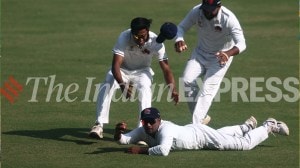New textbooks out
MUMBAI, May 20: The new look' Balbharati language and maths textbooks for standard one and two are out. Published by the Maharashtra Rajya...

MUMBAI, May 20: The new look’ Balbharati language and maths textbooks for standard one and two are out. Published by the Maharashtra Rajya Pathyapustak Nirmiti Mandal, these textbooks are first in the new syllabus releases.
The new textbooks are in keeping with the state education department’s competency-based primary education syllabus’ finalised in 1995. The aim of the syllabus is to induct the minimum levels of learning in primary students.
In the words of the Board director Vasant Kalpande, “Our motto is teach less, but teach thoroughly’. The aim is not to burden the student with knowledge, but to make the education process entertaining. We make the student relate to surroundings. As a result, he gains minimum competency in reading, writing and other rudimentary skills towards the end of primary education.”
The new syllabus have quite a few new features. First, apart from being a textbook, it is also a self-help workbook for students. Exercises are incorporated in every lesson, further followed by sample tests. Moreover, students’ activities are recommended in every chapter. For instance, the first standard maths book explains the concept of counting numbers by making the pupils count their fellowmates, trees in the compound, windows in the building etc.
Unlike earlier books, these books contains more pictures and are more colourful. In case of language texts, some stories are even narrated in easy to assimilate comic strips. More importantly, the new textbooks have footnotes for teachers, which can be used by the parents too. There are detailed instructions for conducting a particular lesson. For instance, the book recommends collective and individual recitation of each poem.
However, these textbooks are found lacking on one major front. As per the integrated policy of the Maharashtra government, the school textbooks should be designed in such a way that they can be learnt by the visually handicapped and other impaired students too.
But, despite this proclamation, the books are not devised to cater to the needs of the handicapped students. In fact, many blind persons’ organisations had repeatedly requested for a renewed syllabus which will take their learning handicap into consideration. Dinesh Mahajan, who works for an organisation active in welfare of the blind, said, “Colours and pictures are alien concepts for the blind. ’Therefore, the education experts should keep the handicap in mind while drafting the lessons.
Integrated education of the blind is not possible otherwise.”
Meanwhile, it is learnt that the National Association of the Blind will come out with the Braille editions of standard one and two textbooks for the coming academic year. At present, there are only 32 schools in Maharashtra which impart the integrated education to the blind (partially and completely) along with able-bodied students.
Even Kalpande admits that the current textbooks have not considered the needs of handicapped students. “Frankly speaking, we do not have that kind of expertise to devise the right means of teaching. ’But, we are certainly looking for guidance from such experts and persons working for the handicapped.”




- 01
- 02
- 03
- 04
- 05



























